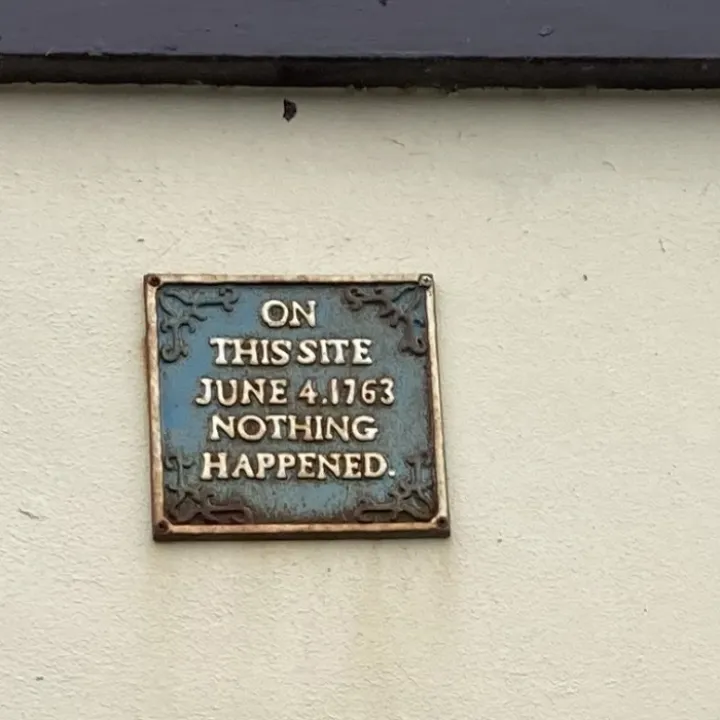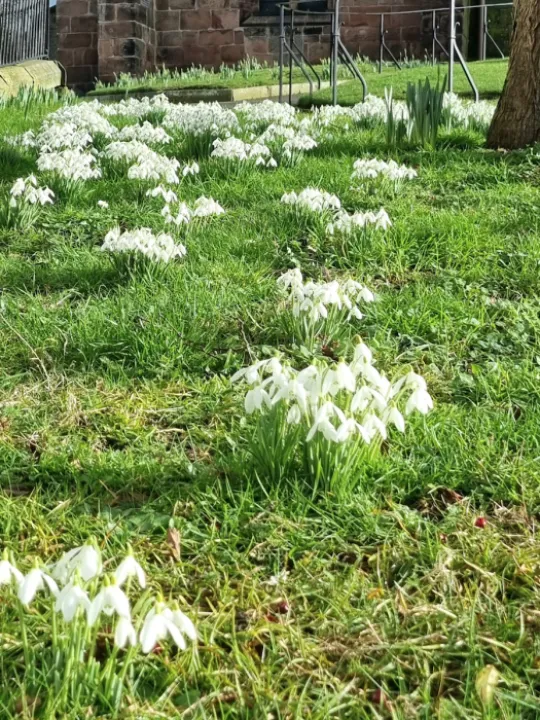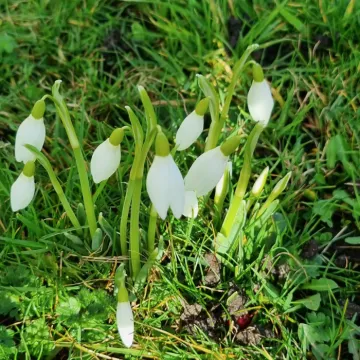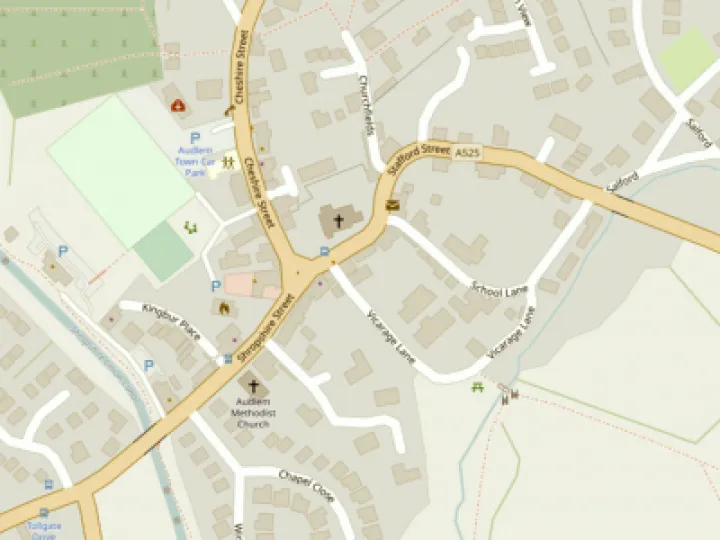







Signs of Spring by Adrian Leighton
With the slightly longer days with the sun showing more reluctance to leave us in the afternoons, the natural world around us is beginning to respond. The first of the botanical signs of Spring are appearing in our gardens and around the village.
There is always a lift to the spirits when the first Snowdrop appears. This is very soon followed by a flurry of revelation as more white colours appear in quick succession. This year the Snowdrops in the churchyard of St James have been exceptional, after ADAS planted a patch last year. Even the forecast of a "snow Bomb" has not deterred this plucky plant. So though our hearts are gladdened at the sight of it, what do we know of it? For knowing might makes us appreciate it even more.
Its scientific name is Galanthus from the ancient Greek for "Milk" "Flower", which is a fair description. Its common name of "Snowdrop" reflects its appearance early in the year and it also goes by the common name "Hope flower"which expresses its effect on us humans. Although it is often seen as a native plant its origin is the Mediterranean area. It was possibly introduced to this country by the Romans but is generally thought to have been brought by traders in the 16th century. It was in the 18th century that it was classified as a wild flower. It has been heavily cultivated and most plants that we see today are from a CLADE or branch of these cultivations. Even those we see in the wild are hybrids of escapees from gardens or deliberately planted cultivars in the "wild".
The plant is a "monocot" referring to the seed formation which is a class of plants which are the oldest in origin and which include all the weird and wonderful house-plants as well as Ferns, Arums (All the Onion-y plants), bamboos etc. So this Flower of Hope springs out of the early flowering on this planet. There's a thought!
One of the plants that I have mentioned before as an early show-er is the sunny faced Lesser Celandine. (You might have picked up that it's a particular favourite of mine). I saw my first of the year along the canal a week ago. This cheery little yellow plant is very much a sun-lover and shuts up its petals and sulks on grey days. Soon its yellow flowers will be prolific along the hedgerows. Liking the shadier damp places to propagate which begins two years earlier, it flowers before the trees and shrubs can produce too much leaf-cover. Much of the plant's growth takes place in the damper winter time ready for the Springtime show.I am not the first to wax lyrical about this little plant, William Wordsworth wrote three poems about the flower and it is also mentioned in C,S Lewis's "The Lion, the Witch and the Wardrobe" when Aslan returns and is symbolic of winter turning to Spring. It is not just a tonic to humans, it also provides early feeding for queen Bumblebees and other small insects that venture forth after the winter's slumber.
So I think that both these plants are worthy of a little ode.]
}
As days stretch out their limbs}
{
And dark transforms to light;
Our hope springs up of warmth,
The world released of night.
And so the world of earth
Makes ready with its signs;
The plucky head of snowdrop,
And sunny face of Lesser Celandine.
The Hope Flower battles
Winter's blast of wind and snow,
Remains stoic and resolute
That Spring is son to know.
Our bright and yellow Celandine
In profusion lines the trees;
Offering nectar for the bees
And solace for human pleas.
So we observing these our friends
Who show us there is more than death
Pointing in time and space to life
Which survives the worst and signs the best.
(Sorry, not quite Wordsworth!)}
Get In Touch
AudlemOnline is powered by our active community.
Please send us your news and views using the button below:
Email: editor@audlem.org







